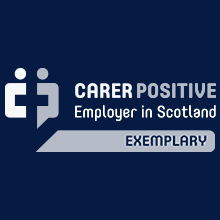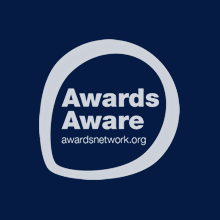Definition
Microcytic and/or hypochromic red blood cells, with or without anaemia, where MCV and/or MCH are below lower end of reference range for age, without other cytopenias.
The commonest causes of microcytosis or microcytic anaemia in children are:
- Iron deficiency
- Thalassaemia trait
- Combination of the above.
Please also see RefHelp advice on inherited red cell disorders.
Dietary iron deficiency
– A dietary history should be taken: iron intake, milk intake (breastfeeding, formula or cow’s milk)
– Infant risk factors: maternal iron deficiency, low birth weight, multiple pregnancies, exclusively breastfeeding > 6 months, late introduction of iron-rich solids, excessive cow’s milk consumption.
– Child risk factors: selective diet, vegetarian or vegan diet, excessive milk consumption (>400mls / day).
– Adolescent risk factors: vegetarian or vegan diet.
Dietary advice should be given but is unlikely to be sufficient to correct existing iron deficiency.
Other causes to consider:
- Malabsorption or GI blood loss – Symptoms suggestive of GI disorders e.g. coeliac disease, inflammatory bowel disease, previous gastric or intestinal surgery.
- Menstruation – In adolescent females, menstruation, especially if there is menorrhagia, is a common cause of iron deficiency.
- Age considerations – Birth – 3 months: Physiological anaemia occurs at 6-9 weeks of age where haemoglobin levels that are high at birth rapidly decline reaching a physiological nadir of around 110g/L.
- Thalassaemia trait – see Primary Care Management for more detail, and Inherited Red Cell Disorders
C.M. & C.H/S.B. 12-02-25
Who can refer:
General Practice and Specialist Clinicians
Who to refer:
Referral to Medical Paediatrics should be considered for:
- Iron deficiency anaemia intolerant of all oral iron preparations
- Iron deficiency anaemia persisting after 3 months of adequate treatment. The most common reason for treatment failure is poor compliance but consider malabsorption and coeliac disease.
Urgent referral via Emergency Department for red flags:
- Hb <60g/L (including in iron deficiency)
- Tachycardia, cardiac murmur or signs of cardiac failure
- Associated thrombocytopenia or neutropenia
E-advice from Haematology: loth.rhcyphaematology@nhs.scot for patients where iron deficiency has been excluded but the ancestry is not consistent with thalassemia trait.
Who not to refer:
1. Iron deficiency anaemia in well children who have not yet been treated or have not had adequate treatment.
2. Thalassaemia trait – please see inherited red cell disorders and Primary Care Management page.
How to refer:
Medical Paediatrics Outpatient referrals via SCI Gateway.
Routine advice from Haematology is available via loth.rhcyphaematology@nhs.scot . But for new patients a SCI Gateway referral for advice should be used.
Urgent advice can be sought via RHCYP switchboard (9am-5pm weekdays).
0131 5361000 – Medical Paediatrics page 9250 or Haematology page 9290.
Primary care investigations
1. Iron studies: ferritin, transferrin saturations
2. Haemoglobinopathy screen if there is family history of thalassaemia and/or relevant ancestry*.
*Please provide ancestry information with request. Parents should be made aware that this is testing for a genetic condition.
Iron deficiency – interpretation of results:
- Up to 5 years: Ferritin < 12mcg/l
- Over 5 years: Ferritin <15mcg/l
- Transferrin saturations <=15%
Ferritin is an acute phase reactant and in the presence of active or recent infection or inflammation, a ferritin of up to 150mcg/l does not exclude iron deficiency. In this situation, unless the transferrin saturation is also normal, a trial of iron with assessment of response should be considered.
Consider the likely cause for iron deficiency and investigate as appropriate – see additional information below.
Iron deficiency and thalassaemia trait can co-exist. Iron deficiency must be adequately treated before alpha thalassaemia trait can be confirmed or excluded.
Thalassaemia trait
If ferritin and transferrin saturations are normal, consider a haemoglobinopathy screen (see above).
Interpretation and management of haemoglobinopathy results
Beta thalassaemia trait reported
A letter, diagnosis card and information sheet will be sent to the GP and parents by the haematology department.
Possible Alpha thalassaemia trait
This is a diagnosis of exclusion when iron deficiency has been ruled out and/or corrected and beta thalassaemia trait has been ruled out and in the context of consistent ancestry.
Thalassaemia trait
Thalassemia trait is commoner in children of non-white Northern European ancestry.
Relevant ancestry of parents and grandparents
- African or African-Caribbean
- South Asian or South-East Asian
- Other non-European (including North Africa, South America, Middle East)
- Southern and other European including Greece, Sardinia, Turkey, Cyprus, Italy, Spain, Portugal, Mediterranean, Czech Republic, Albania, Poland, Romania, Russia.
Online information for families: Thalassaemia – Thalassaemia carriers – NHS (www.nhs.uk)
Treatment and assessment of response
Iron Deficiency or Iron Deficiency Anaemia
Oral iron- see BNF for further details.
Treat until haemoglobin has normalised AND for a further 3 months.
In patients who are not anaemic but whose iron levels are low, treat with 3 months of iron therapy to replenish iron stores.
https://bnfc.nice.org.uk/treatment-summary/anaemia-iron-deficiency.html
Oral iron may be associated with gastrointestinal side effects. Starting with once daily dosing and reducing to alternate days if side effects are troublesome, would be prudent.
In adult studies, once daily (or even alternate day) dosing has been shown to be as effective as two or three times daily doses due to effects on hepcidin and iron metabolism and so similar effects would be expected in children.
Assessment of response
In cases of moderate to severe anaemia (Hb<80- 90g/l) consider re-checking FBC to monitor haemoglobin response to iron in the first few weeks of treatment and after treatment is complete.
With adequate treatment with oral iron, the haemoglobin would be expected to rise by 10g/l per week.
If there is a suboptimal response, consider adherence or GI conditions resulting in malabsorption.
In patients without anaemia or with only mild anaemia at diagnosis, where there are no clinical concerns and thalassemia trait is unlikely, a repeat FBC at the end of iron treatment may not be required. In patients of consistent ancestry, where co-existent alpha thalassemia trait is possible, then a repeat FBC and iron studies at the end of iron treatment is advised. If the low MCV and/or MCH persist despite normalization of iron studies this would be in keeping with alpha thalassemia trait.
Dietary advice to prevent recurrence of iron deficiency
- reduce milk intake to no more than 400mls per day (over 1 year of age)
- avoid tea (tannins reduce iron absorption)
Encourage iron-rich diet if suitable depending on the age of the child.
Iron | British Dietetic Association (BDA)
Thalassemia trait
Alpha and beta thalassemia trait are asymptomatic carrier conditions but can be associated with a mild degree of anaemia. No treatment is necessary, but patients should be re-investigated for other causes if they develop worsening anaemia.
Inheritance of thalassemia trait can result in a clinically significant haemoglobin disorder if co-inherited with another haemoglobinopathy trait. Family screening should be considered especially if parents have not been tested, and further children are planned. In Scotland, antenatal screening is offered to women at booking using an algorithm based on abnormal FBC indices or relevant ancestry.
Iron | British Dietetic Association (BDA)
https://www.rch.org.au/clinicalguide/guideline_index/Anaemia
https://www.uptodate.com/contents/approach-to-the-child-with-anemia
https://bnfc.nice.org.uk/treatment-summary/anaemia-iron-deficiency.html
Fletcher, A., Forbes, A., Svenson, N., Wayne Thomas, D. and (2022), Guideline for the laboratory diagnosis of iron deficiency in adults (excluding pregnancy) and children. Br J Haematol, 196: 523-529. https://doi.org/10.1111/bjh.17900
Ryan, K., Bain, B.J., Worthington, D., James, J., Plews, D., Mason, A., Roper, D., Rees, D.C., De La Salle, B., Streetly, A. and (2010), Significant haemoglobinopathies: guidelines for screening and diagnosis. British Journal of Haematology, 149: 35-49. https://doi.org/10.1111/j.1365-2141.2009.08054.x













